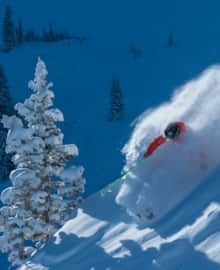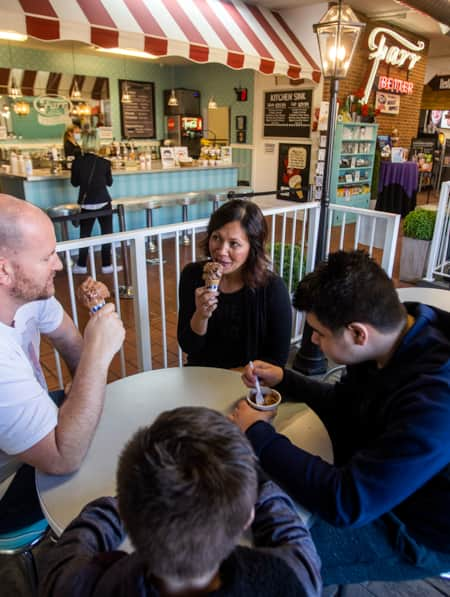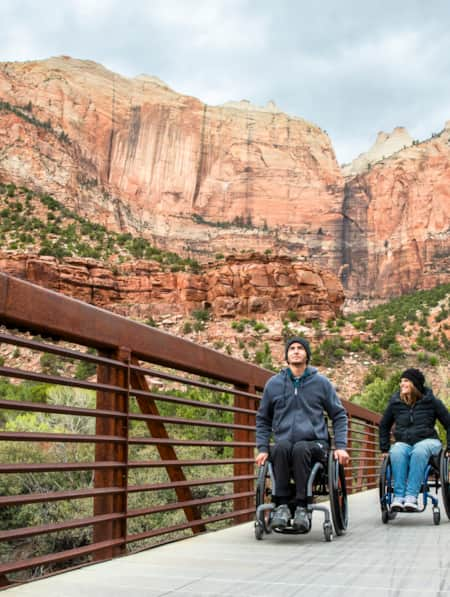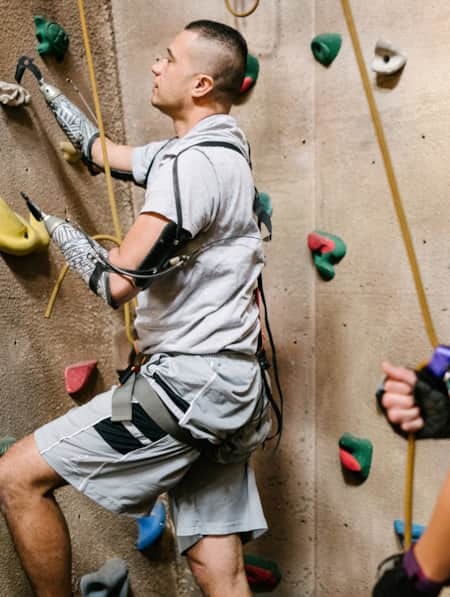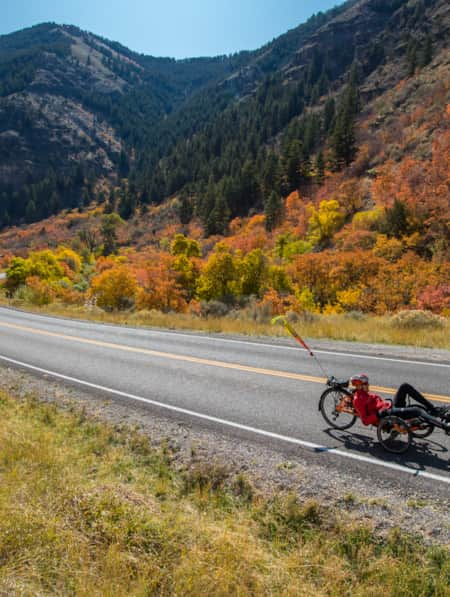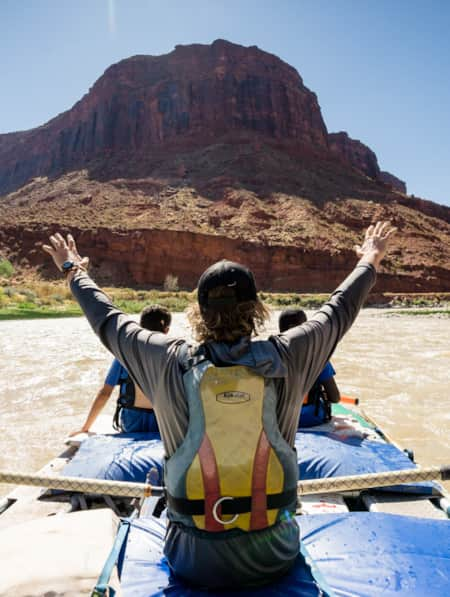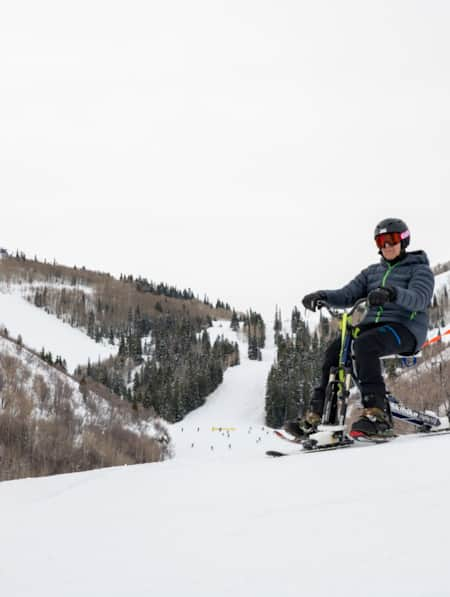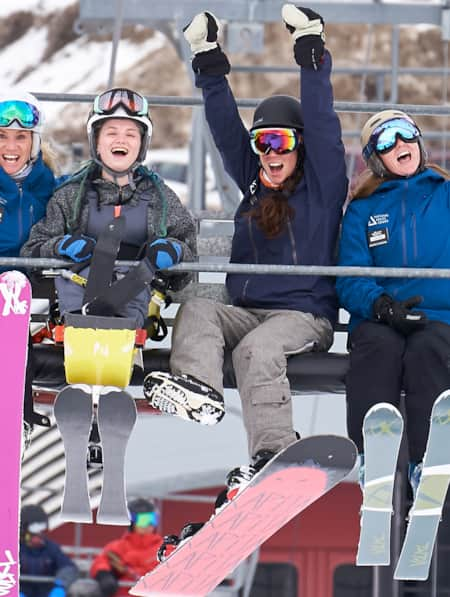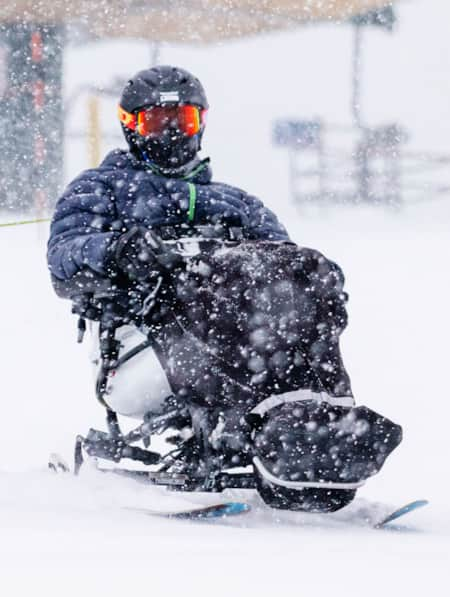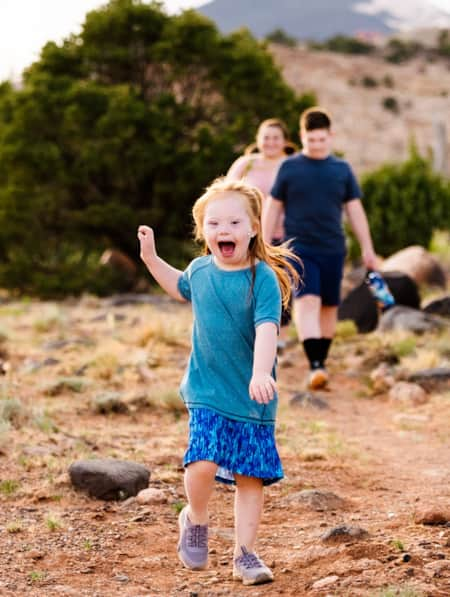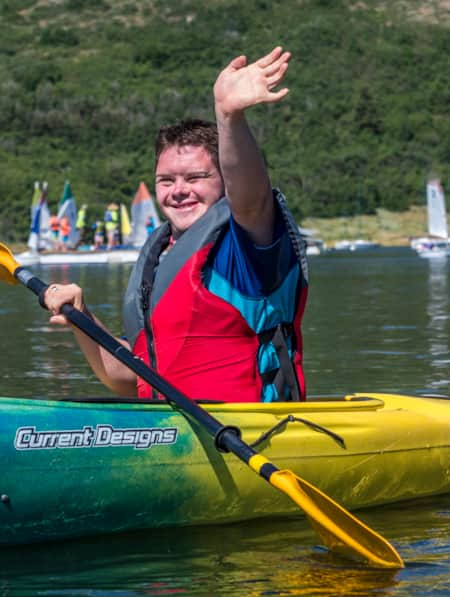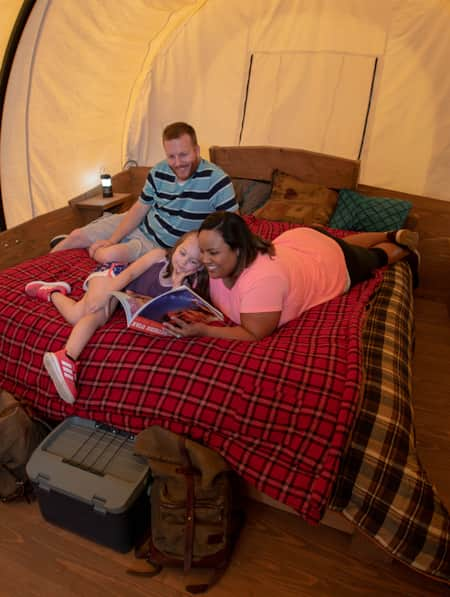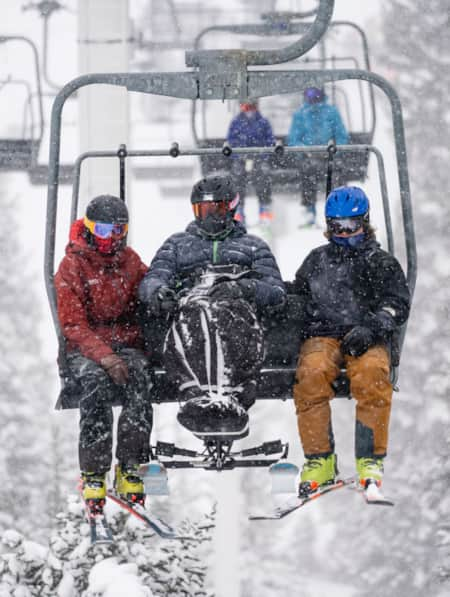Adaptive Skiing: Meet Three Inspiring Young People
Meet three young skiers who have overcome physical challenges to find freedom on Utah’s mountains.
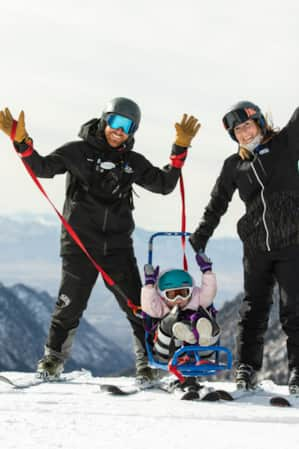
Positivity and Confidence
When she skis, four-year-old Millie wears a big smile.
But that expression doesn’t only appear when she’s on the mountain. “Millie was born with that smile,” says her mom Amanda. “And it’s always there.” Millie was born confident and joyful. She was also born with a cancerous spinal tumor that didn’t respond to chemotherapy.
Lifesaving surgery to remove the tumor caused her to lose the use of her legs, but she didn’t lose her spirit. “I’ve never seen a child like her,’ Amanda says. “She is joy, pure joy.”
Amanda’s brother, Wasatch Adaptive Sports Program Coordinator Jared Dangerfield, suggested that through the magic of adaptive recreation, Millie’s life could be just as joyful physically in spite of her challenges. (Read: "Spreading the Joy of Adaptive Recreation")
That’s why Millie was on the ski hill at three, and is a Snowbird regular at age four. A specially fitted ski-sled her uncle customized for her made the difference.
“Her apprehensive tears on the first day turned into a big smile about halfway down her first run,” Amanda says. “She finished that first run with arms in the air exclaiming ‘More!’ At that moment, I realized the possibilities for her.”
So far, the possibilities include an adaptive trike Millie rides in the warm-weather months. And yes, the radiant smile goes with her.
Millie — along with 14-year-old Charlie, from London, and 13-year-old Jordan, from Atlanta — are just three stories that underscore the life-changing work of the state’s adaptive providers, who make Utah’s outdoor landscapes and mountains accessible (Read: "Utah's Outdoors Are Wide Open for All Abilities"). Some adventure-seekers require specialized equipment, while others need the right level of instruction and support. (Read: "TetraSki Offers Freedom and Independence for Skiers of All Abilities")
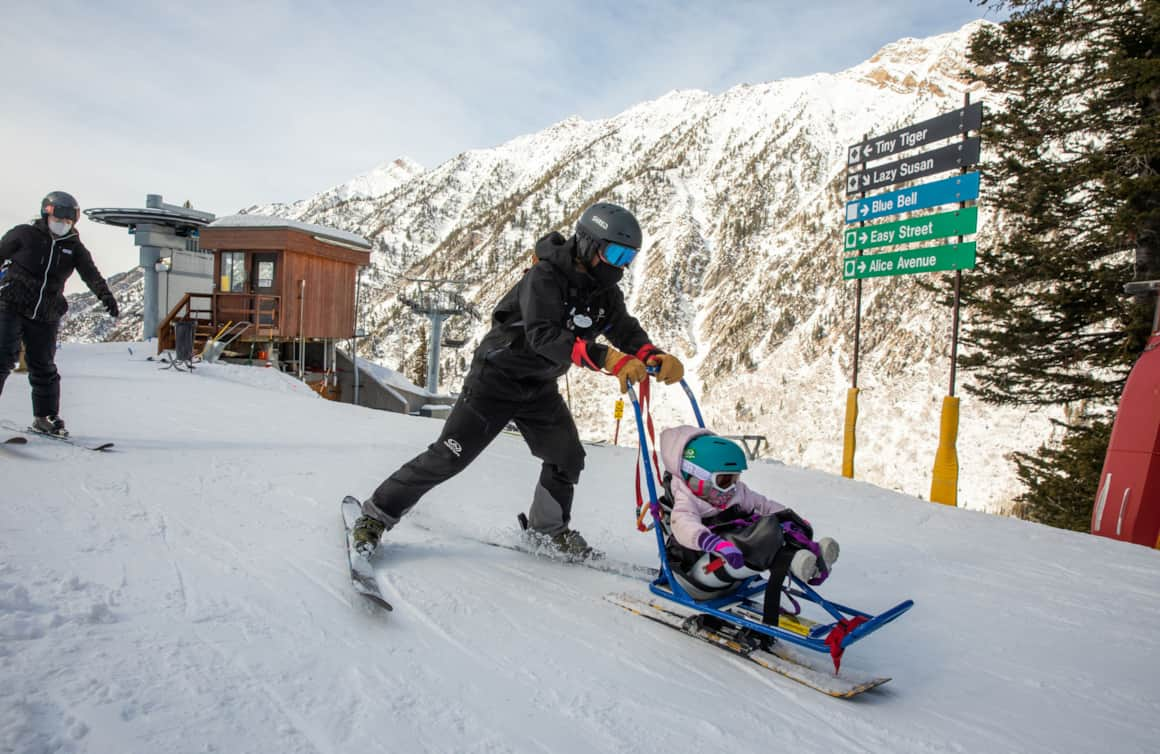
Millie hits the slopes with her Wasatch Adaptive Sports instructor Jared Dangerfield.
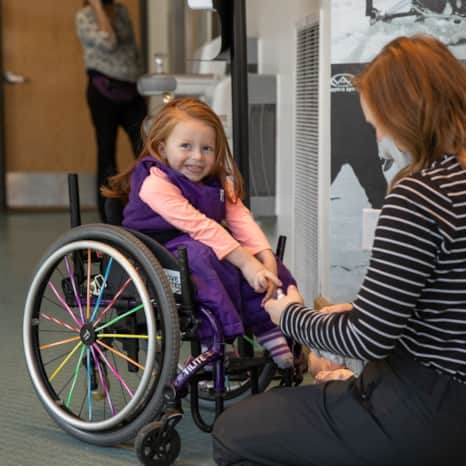
Millie gets suited up at Wasatch Adaptive Sports, located at Snowbird Ski and Summer Resort.
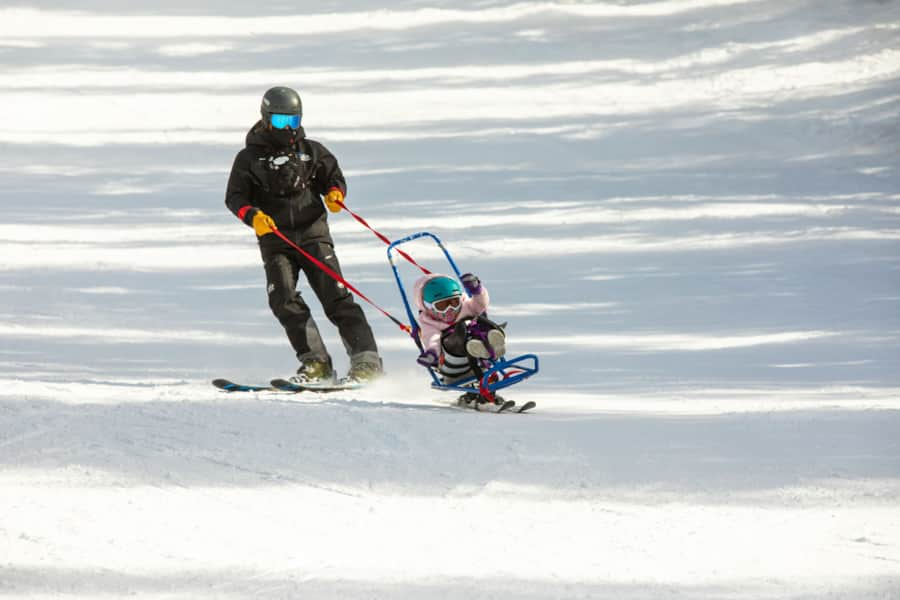
Millie finishes her run with her arms in the air.
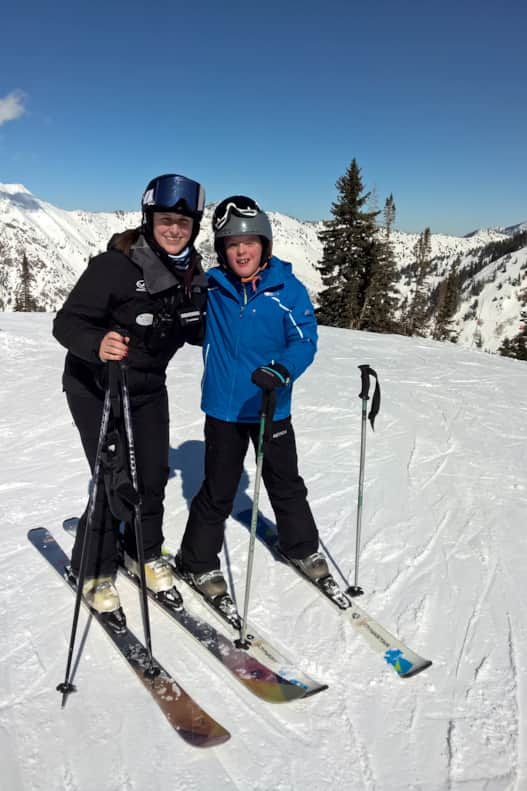
Wasatch Adaptive Sports instructor Sara Burgos with Charlie on Hidden Peak.
Encouragement and Understanding
Charlie calls London home, but he calls Snowbird his home ski mountain. Every year, Charlie and his mother Elizabeth make the 4,869-mile journey to ski Snowbird with Wasatch Adaptive Sports. They’ve been regulars for five years now, totaling 48,690 miles of ski commuting — so far.
That’s nothing compared to the ground Charlie has covered in his skiing and his life. Charlie has Down Syndrome, which could have short circuited his ability to live life to the fullest.
But Charlie doesn’t see it that way. He lives life to the max. Even though he only gets in about five skiing days a year, he’s already a Snowbird Tram dog.
Check this out: Last trip, Charlie took the Snowbird Tram to the top of 11,000-foot Hidden Peak with his ski instructor, had lunch with his mom at the Summit, skied a few laps on Chips Run before heading over to Mineral Basin for a few more runs and then finished the day on Big Emma.
Anybody who’s skied Snowbird knows that’s a leg-burning day covering more than 12,000-vertical feet of big-mountain terrain. It’s all possible because of organizations such as Wasatch Adaptive Sports and people such as ski instructors Danielle Kuykendall and Sara Burgos: They provided just the right amount of encouragement, support and savvy instruction, combined with patience and understanding. Charlie took it from there.
He got the best Snowbird had to offer and ended the day with a big smile to boot. He’s bummed that due to Covid-19, his family won’t be making their regular February trip to Snowbird this year thanks to United Kingdom quarantine requirements that would make him miss too much school on returning home.
They’ll be back next winter. In the meantime, Charlie will be hitting the trampoline at school, the soccer field with his team and cycling around London with family. “He’s just an all-around jock,” says his mom Elizabeth.
"Life-changing stories...happen every day at Utah adaptive recreation providers, who provide encouragement, support, adaptive equipment and instruction, while Mother Nature provides the playground, inspiration and healing."
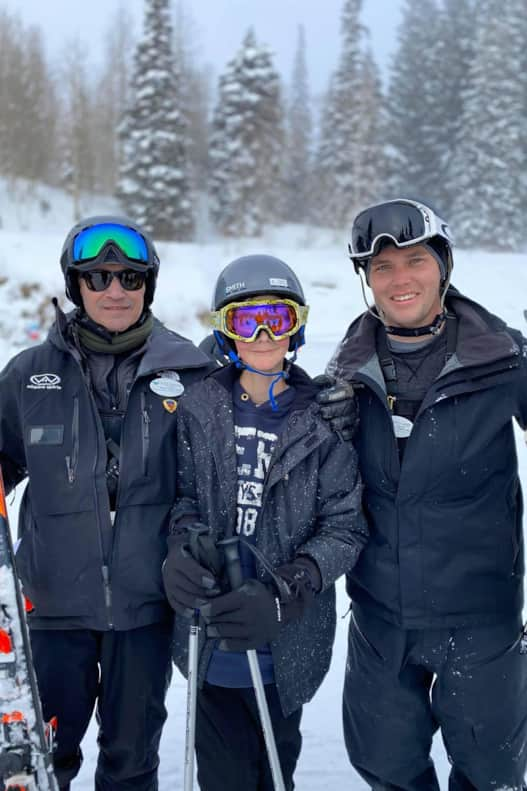
Wasatch Adaptive Sports founder Peter Mandler with Jordan and instructor Bryce Webb.
Grit, Determination and Intelligence Make the Difference
Then there’s 13-year-old Jordan from Atlanta, Georgia. Compared to Charlie, Jordan has a relatively short commute of 1,881 miles one way.
He’s a Snowbird and Wasatch Adaptive Sports regular, skiing in winter and cycling in warm-weather months. Jordan is challenged with Ehlers Danlos Syndrome, which saps his strength and stamina. He more than makes up for it with grit, determination and pure intelligence. He’s one smart dude.
Skiing and cycling are two of Jordan’s favorite sports. “I like it here, because they make it so I can participate, but they don’t make it too easy,” he says about Snowbird and Wasatch Adaptive Sports. “I like challenges.”
His stepmom Elizabeth says: “We wondered if he could ski on his own without special equipment, but they had him up and skiing the first day on regular skis.” He’s one of four siblings, and now they all ski together, with Jordan in the thick of the fun. (Read: "When Turns Are About Adaptability, Not Disability")
During the warm weather months, the family visits Utah to cycle together. Wasatch Adaptive Sports fixed Jordan up with a cleverly geared recumbent trike to give him the best performance possible. It works. Nobody has to wait for Jordan on the bike path. He’s right there with the pack. Challenge met.
Life-changing stories like Millie’s, Charlie’s and Jordan’s happen every day at Utah adaptive recreation providers, who provide encouragement, support, adaptive equipment and instruction, while Mother Nature provides the playground, inspiration and healing. The end result is a lifetime of outdoor adventure.
The final takeaway? When you come to Utah for a winter vacation, regardless of your physical capabilities, it’s possible to find an inclusive experience that’s right for you, no matter how far you traveled to get here. Just ask Millie, Charlie and Jordan. (Read: "A Sensory-friendly and Adaptive Survival Guide to Traveling in Urban Utah")
